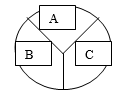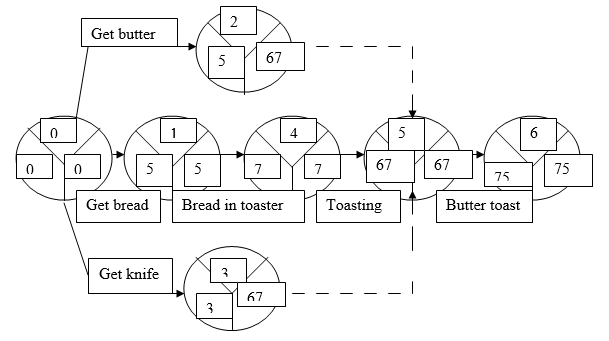
Category:
Optional
Description and Purpose:
This is a tool for scheduling and managing complex project activities
Method:
Critical Path Analysis (CPA) and Program Evaluation and Review Technique (PERT) are tools that enable you to schedule and manage complex projects. They were developed in the 1950s to control large defense projects, and have been used widely since.
The benefit of using critical path analysis techniques over Gantt Charts is that critical path analysis formally identifies tasks which must be completed on time for the whole project to be completed on time, and also identifies which tasks can be delayed for a while if resources need to be reallocated to catch up on missed tasks. The disadvantage of critical path analysis is that the relation of tasks to time is not as immediately obvious in complex projects as it is in Gantt Charts. This can make them more difficult to understand.
A further benefit of critical path analysis is that it helps you to identify the minimum length of time needed to complete a project. Where you need to run an accelerated project, it helps you to identify which project steps you should accelerate to complete the project within the available time. This helps you to minimize cost while still achieving your objective.
As with Gantt Charts, critical path analysis helps you to plan all tasks that must be completed as part of a project. They act as the basis both for preparation of a schedule, and of resource planning. During management of a project, they allow you to monitor achievement of project aims. They help you to see where remedial action needs to be taken to get a project back on course.
The critical path represents the sequence of tasks or events that directly affect the completion of a project. Knowing the critical path allows the project manager to shorten or at least control a project's schedule by focusing on those tasks that directly affect the project's completion.
The following is a simple example of critical path analysis:
A = Completion of activities
B = Earliest completion time
Latest completion time
Example of Buttered Toast
Activities:
| Get bread | 5 |
| Get butter | 5 |
| Get knife | 3 |
| Bread in toaster | 2 |
| Toasting | 60 |
| Butter toast | 8 |
The minimum task period is 75 seconds.
The critical line is the middle one – this has to be well managed to ensure the task is completed in minimum time.
Critical Path Analysis is an effective and powerful method of assessing:
- What tasks must be carried out
- Where parallel activity can be performed
- The shortest time in which you can complete a project
- Resources needed to execute a project
- The sequence of activities, scheduling and timings involved
- Task priorities
- The most efficient way of shortening time on urgent projects
As with Gantt Charts, in practice project managers tend to use software tools like Microsoft Project to create critical path analysis charts. Not only do these make them easier to draw, they also make modification of plans easier and provide facilities for monitoring progress against plans.
PERT (Program Evaluation and Review Technique)
PERT is a variation on critical path analysis that takes a slightly more skeptical view of time estimates made for each project stage. To use it, estimate the shortest possible time each activity will take, the most likely length of time, and the longest time that might be taken if the activity takes longer than expected.




